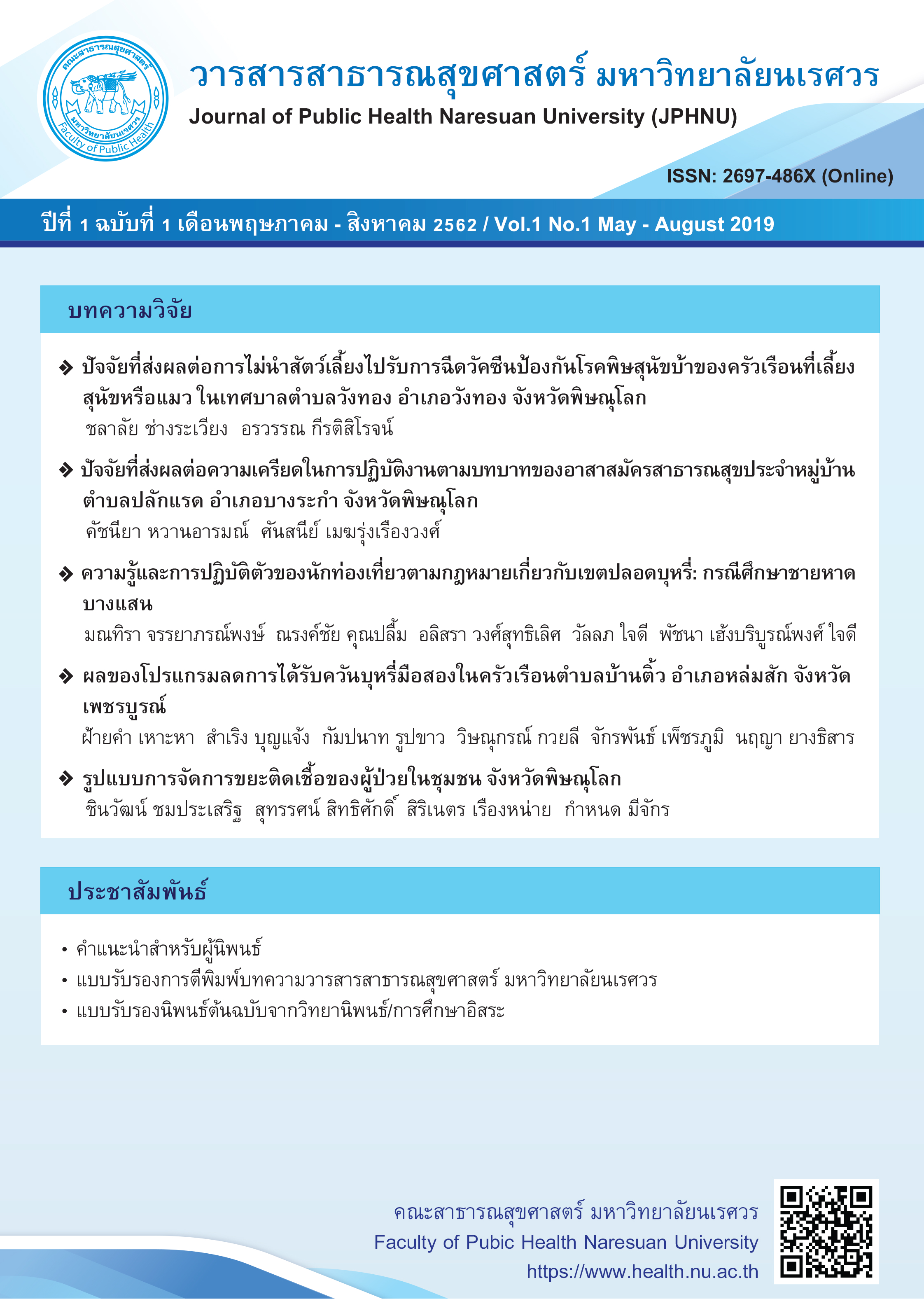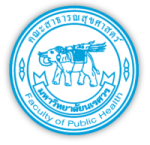Effects of secondhand smoke reduction programin the household, Ban Tio Sub-district, Lom SakDistrict, Phetchabun Province
Keywords:
Secondhand smoke, Smoke-free house, Secondhand smoke reduction programAbstract
This study is a quasi-experimental research, aimed to study the effectiveness of reducing secondhand smoke program in the household in Ban Tio Subdistrict, Lom Sak District, Phetchabun Province. The sample was the household who have children aged 0-5 years living with people who smoke. The sample was divided into 2 groups of experimental group and control group for 20 households in each group.Purposive sampling according to the inclusion criteria was applied to recruit participants. Data was collected before and after the experiment by using questionnaires. Data analyzed using descriptive statistics and Mann-Whitney U test and Wilcoxon signed-rank test.
The study indicated that after undertaking the program, family members who live with children age 0-5 years and those who smoke have an average score of perceived risk of developing disease from secondhand smoke, perceived severity from secondhand smoke, perceived of benefits of not touching secondhand smoke, family health care behavior, preventive behavior and avoid getting secondhand smoke, and behavior in compliance with smoking-free house was higher than before the experiment and higher than the control group with statistical significance of p-value < 0.05. Therefore, this program improved perceived risk, perceived severity, perceived benefit, preventive behavior, and avoid getting secondhand smoke behavior that can be reduce secondhand smoke exposure in household.
References
Best, J.W. (1977). Research in Education (3rd ed).Englewood Cliffs, New Jersey: Prentice Hall.
Centers for Disease Control and Prevention. (2017).Health Effects of Cigarette Smoking.Retrieved Aug 15, 2017, from www.cdc.gov/tobacco/data_statistics/fact_sheets/health_effects/effects_cigsmoking/index.htm
Community Happiness Research Center. (2010).The research report explores the opinions on the form of warning images on cigarette cases. Case studies. Smokers aged 18 years and over in Bangkok: Non-Smoking Campaign Foundation. (in Thai)
Enstrom J. E.,& Kabat C. G. (2003). Environmental tobacco smoke and tobacco related mortality
in aprospective study of Californians, 1960-98. BMJ, 326(7398), 1057.
Heatherton T. F., Kozlowski L. T., Frecker R. C., & Fagerstrom K. O. (1991) The fagerstrom test for nicotine dependence: a revision of the fagerstrom tolerance questionnaire. Br J Addict, 86(9), 1119-27.
Nguyen, K.H., Gomez, Y., Homa, D.M., & King, B.A.(2016). Tobacco use, secondhand smoke,and smoke-free home rules in multiunit housing. American Journal of Preventive Medicine,51(5), 682-692. doi:10.1016/j.
amepre.2016.05.009.
Papralit, S. (2015). The effects of brief smoking cessation education program and telephone follow up in roofing products industry, Saraburi province. Master of Nursing Science, Mahidol University. (in Thai)
Phetphum, C. (2017). Literature review “Nonsmoking house” In M. siriwan (Ed.), Keep pace with research (TRC). 9(3),(pp.1-24).Bangkok: Tobacco Control Research and Knowledge Management Center Press
Pitayarangsarit, S., Danpradit, B., Tohan, S., & Pawaphutanondh Na Mahasarakham, C.(2014). The Situation of Smoke-Free Homestand Father’s Smoking Behaviors.Journal of Health Education, 37(128), 61-74.
(In Thai)
Rovinelli, J., & Hambleyon, K. (1977). On the use of content specialists in the assessment of criterion-referenced test item validity. Dutch Journal of Educational Research, 2,49-60.
Sivasan, S. (2015). Effects of a smoking prevention and secondhand smoking avoidance program for primary school students. (Master of nursing science, Mahidol university).(in Thai)
Sota,J., (2011). Concepts theories and application for health behavioral development. (3rd ed).Khon Kaen Printing Plant: University :Khon Kaen(In Thai)
World Health Organization. (2017). Global Health Observatory (GHO) data: Second-hand smoke. Retrieved Aug 15, 2017, from www.who.int/gho/phe/secondhand_smoke/en/
Downloads
Published
How to Cite
Issue
Section
License
The published article is copyrighted by the Journal of Public Health and Health Sciences Research.
The statements that appear in each article in this academic and research journal are the personal opinions of each author and are not related to Naresuan University and other faculty members in the university. Responsibilities regarding each article are the responsibility of each author.






